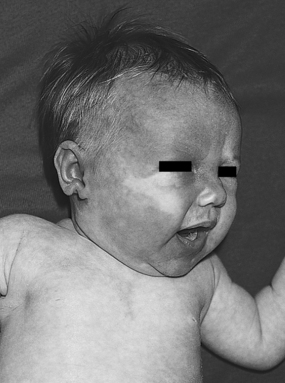81. Sturge-Weber Syndrome
Definition
Sturge-Weber syndrome (SWS) is a congenital disorder characterized by leptomeningeal angiomas as well as cutaneous angiomas along distributions of the trigeminal nerve (usually only on one side), in particular the ophthalmic and maxillary tracts. The cutaneous angioma is known as the port-wine stain or port-wine angioma. Sturge-Weber syndrome is also called encephalotrigeminal angiomatosis and Sturge-Kalischer-Weber syndrome.
Incidence
The incidence of SWS is estimated to be 1:50,000.
Etiology
The etiology of SWS is not clear. The angiomas appear to develop as the result of a somatic mutation that alters the structure, function, and innervation of blood vessels, expressed as seen in the extracellular matrix and vasoactive molecules. SWS is seen in people of all races and both genders.
Signs and Symptoms
• Attention deficit hyperactivity disorder
• Buphthalmos (congenital glaucoma)
• Choroidal angioma
• Glaucoma
• Headache
• Hemianopsia
• Hemiparesis
• Heterochromia of the iris
• Macrocephaly
• Mental retardation
• Port wine stain or angioma
• Seizures
• Soft-tissue hypertrophy
• Stroke
• Tomato-catsup colored fundus of the eye
• Vision loss
• Weakness
 |
| Sturge-Weber Syndrome. Port wine stain on infant who subsequently developed seizures with Sturge-Weber syndrome. |
Medical Management
The primary medical concerns for care of the patient with SWS include seizure control, headache relief (both symptomatic and prophylactic), reduction of intraocular pressure, and removal of the port-wine stain. Seizure control is typically achieved with administration of anticonvulsant medications. Seizures associated with SWS are generally focal and, as a result, frequently respond well to anticonvulsant therapy.
Buy Membership for Anesthesiology Category to continue reading. Learn more here







